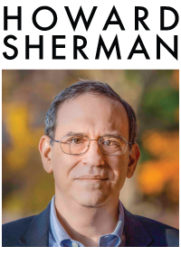
If you wanted to vote in Chase Community Giving, this shows what you had to give them for the privilege (click to enlarge).
This morning, my Twitter feed was filled with a series of almost repetitive messages from New York Theatre Workshop, the excellent Off-Broadway company that was the starting point for Rent, Once and Peter and the Starcatcher, to name but three. The messages were directed tweets to a number of people that they, and I, follow on Twitter, and the message was to ask for support through re-tweeting in NYTW’s quest for funding from the Chase Community Giving program on Facebook. The program deadline is today.
For those unfamiliar with the program, it is one of several corporate initiatives which enables the general public to vote for their favorite organizations, in this case a quest for a total of $5 million in funding. Populist? Sure. Using social media creatively? Yes. A terrific step in grant-making? Absolutely not.
This sort of funding mechanism forces companies to compete in the ugliest way; a couple of years ago, one NYC not-for-profit (which I won’t name, since they publicly apologized) actually tweeted about needing help to “beat” other organizations to the money. It also requires everyone who wishes to vote to “like” the sponsoring corporation, allowing them access to one’s Facebook timeline before one can express support. In the case of Chase, it gives a voting advantage to their own customers, so the process is already rigged, laying bare that this sort of funding is marketing in sheep’s clothing.
Last week I wrote about artistic directors who abdicate their responsibility when they allow audiences to vote on their program, and this mechanism shows how corporations are comparably willing to abdicate their responsibility for adjudicating and weighing where their philanthropic dollars can do the most good. Oh, wait, I’ve misspoken, since this isn’t philanthropy at all, it’s a contest, run by marketing. I keep forgetting. I bet most people do, in this era where we vote for idols on our cell phones.
No not-for-profit can afford to look a prize horse in the mouth, and so countless organizations do their best to rally their constituency in these Darwinian survivals of the fittest (or, really, most popular). But I worry that they cheapen themselves in their efforts to enrich themselves. And so many worthy causes have a truly uphill struggle: could the presence of The Ian Somerholder Foundation’s at Number 4 on the Chase “leaderboard” at the moment be due more to its founder’s youthful celebrity than its excellent focus?
Facebook giving contests have a strange corollary to politics, where so often people vote for the lesser of two evils, not someone they’re truly excited about. But here, most every candidate is probably worthy of our respect. It’s the process that is un-“like”-able.
Update, May 16, 2014: I read a blog post today from CreateEquity entitled, “Crowdsourced corporate philanthropy died a year and a half ago, and no one seems to have noticed.” It should surprise no one who read my post that I am delighted at the news. Whether this is a hiatus or true end remains to be seen.



